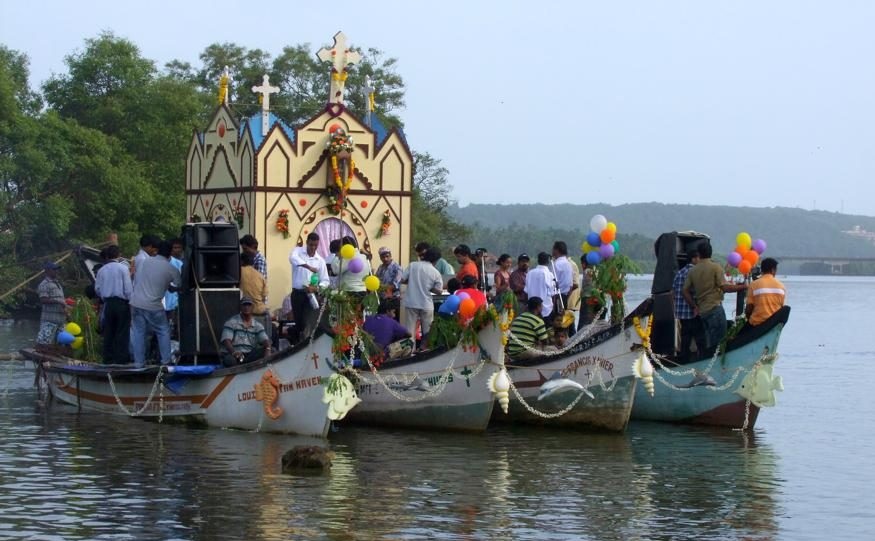
Goans celebrate the feast of Saints Peter and Paul every year on June 29 with deep religious devotion and cultural vibrancy. The Roman Catholic Church commemorates this date to honor the martyrdom of the apostles Peter and Paul in Rome around 64 AD. These two saints, revered as pillars of the Church, continue to inspire faith and tradition across the Christian world, including the coastal state of Goa.
Remembering the Apostles: Peter and Paul
Peter, originally named Cephas, meaning “rock,” was born in the fishing village of Bethsaida. As one of the first twelve apostles, Peter became a central figure in the early Church and is widely considered the first Pope. Jesus appointed him in the famous “Rock of My Church” dialogue. Peter accompanied Jesus during key moments, including the Transfiguration and the Last Supper. Despite denying Jesus three times, Peter later emerged as a powerful preacher, delivering the sermon on Pentecost. When Emperor Nero ordered his execution, Peter asked to be crucified upside down, feeling unworthy to die like Christ. Today, his grave lies beneath St. Peter’s Basilica in Vatican City.
Paul, formerly known as Saul, was a Pharisee from the Tribe of Benjamin who initially persecuted early Christians. However, on the road to Damascus, a divine vision changed the course of his life. Struck blind by a bright light, he heard Jesus speak to him. After three days, Ananias of Damascus healed him, and Paul converted to Christianity. He then embarked on three missionary journeys, spreading the Gospel across Asia Minor, Greece, Cyprus, and Syria. Paul, although he never met Jesus during His lifetime, wrote a large part of the New Testament and remains one of the most influential apostles.
The Sangodd Festivities: Faith and Fishing Tradition
In Goa, this feast also marks the start of the traditional ramponn fishing season. Fishermen communities across the state celebrate with a unique festival called “Sangodd.” This age-old tradition blends religious observance with cultural celebration. Historically celebrated in Sinquerim and Candolim, the Sangodd festival involves fishermen lashing their canoes together to create a floating platform on the river.
On this symbolic stage, villagers present lively performances of Konkani songs, folk dances, and music. They also construct miniature chapels and churches as backdrops, highlighting the contribution of Saints Peter and Paul to the Church. After the morning Mass, the Sangodd procession begins at 3 PM and sails along the river, delighting crowds gathered on the riverbanks.
Celebrations Across Goa
In Orda-Candolim, this tradition has thrived for more than 150 years. In Ribandar, the community has celebrated the feast for over a century. The festivities begin with the parish priest of Our Lady of Help Church carrying the statue of St. Peter to the Sangodd with a brass band leading the way. The Sangodd sets off from the Ribandar ferry point, sails up to the Goa Institute of Management, and then returns to St. Peter’s Chapel, nestled between Solar dos Colaço and Camelot.
As the priest blesses the river and fishing nets with holy water, fishermen pray for a safe and prosperous fishing season. Afterward, the Eucharistic celebration follows at the church. Communities in Caranzalem, São Pedro, and Bainguinim also observe this feast with similar reverence. In South Goa, villages like Assolna and Ambelim celebrate on the River Sal. There too, the priest blesses the water and nets, reinforcing the community’s connection to the sea, faith, and seasonal rhythms.
A Celebration of Faith, Culture, and Livelihood
The Solemnity of Saints Peter and Paul, along with the Sangodd festivities, showcase how Goans weave their religious devotion into everyday life and livelihood. By honoring their patron saints, fishermen not only celebrate their faith but also seek divine protection and blessings for the monsoon season. This blend of history, tradition, and communal joy continues to anchor the spirit of Goan coastal life year after year.


